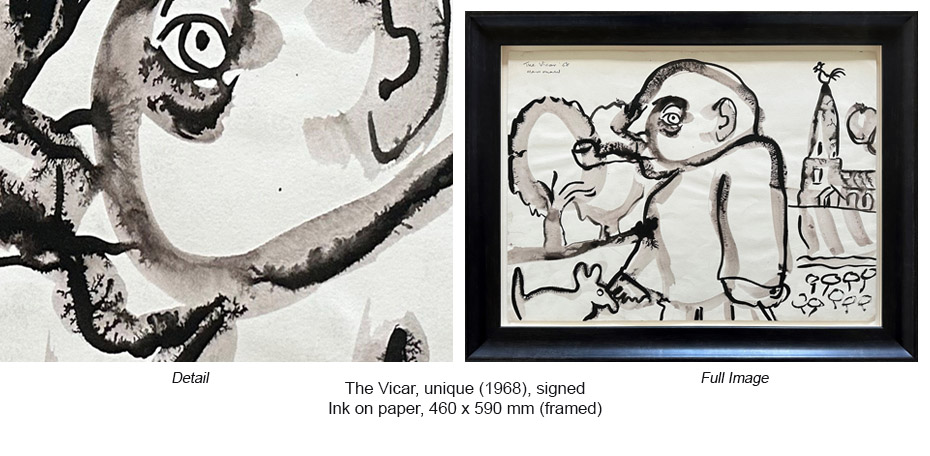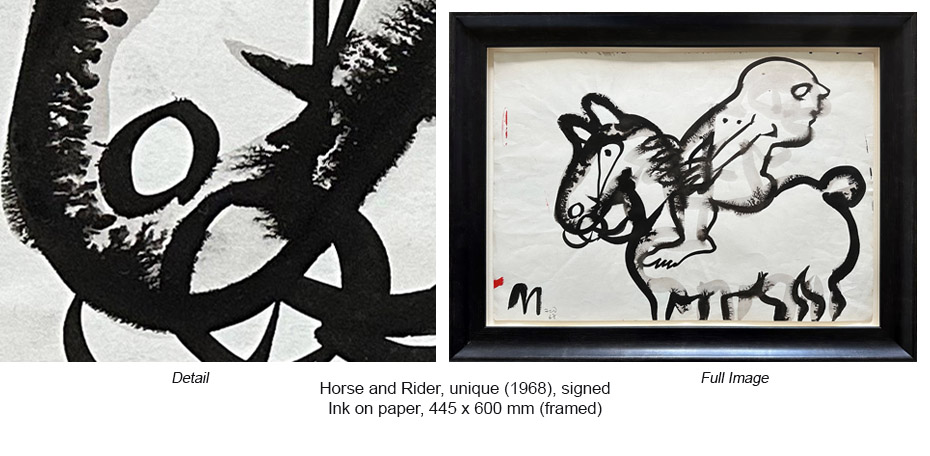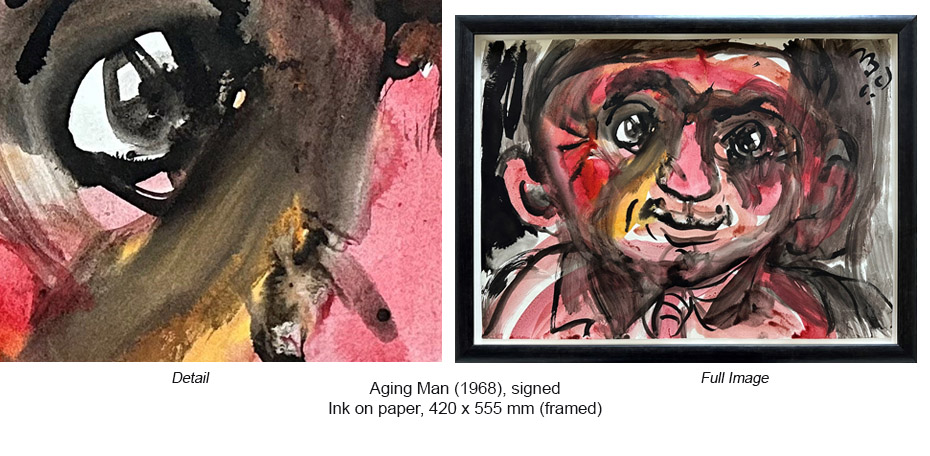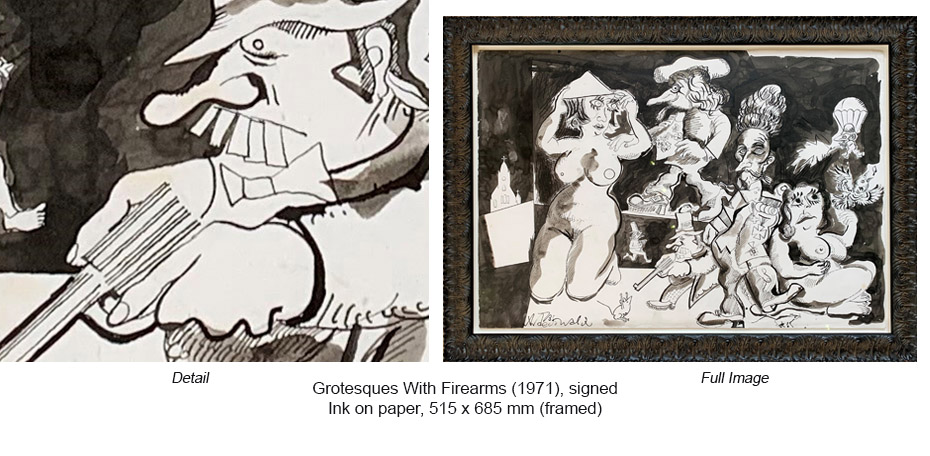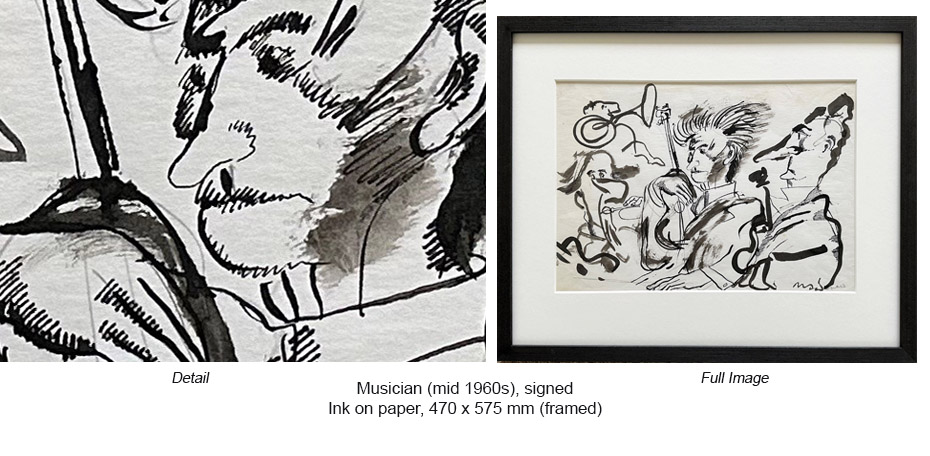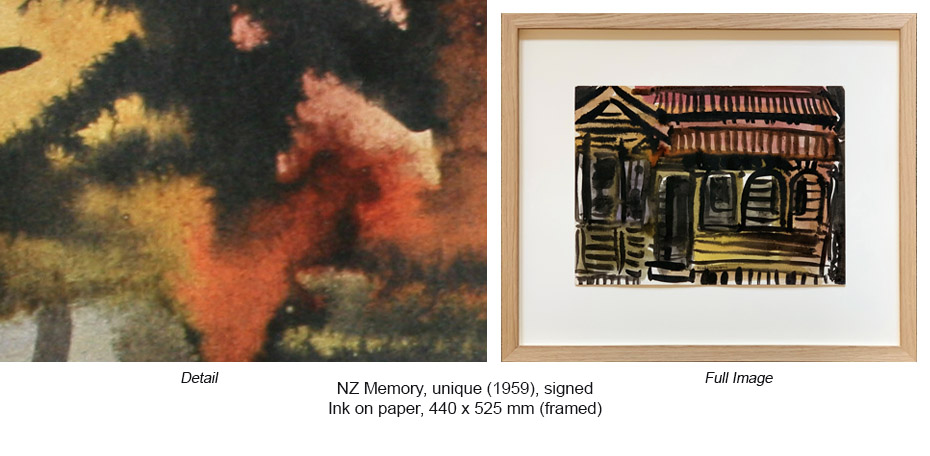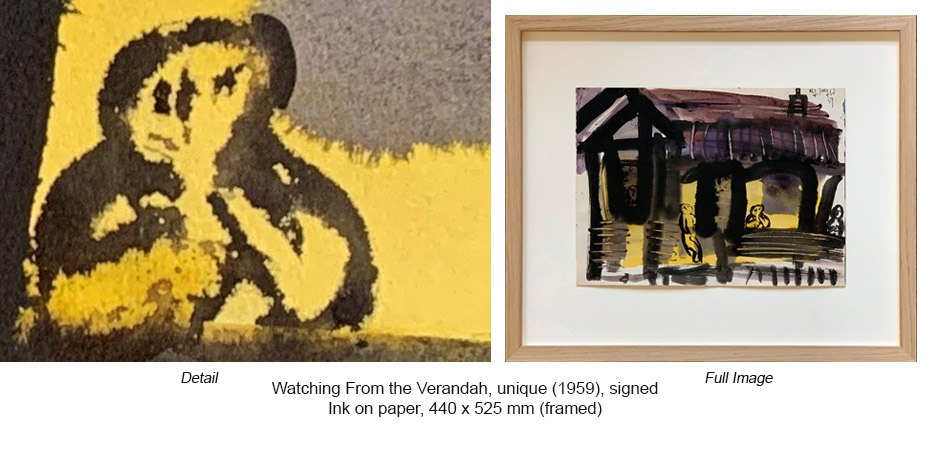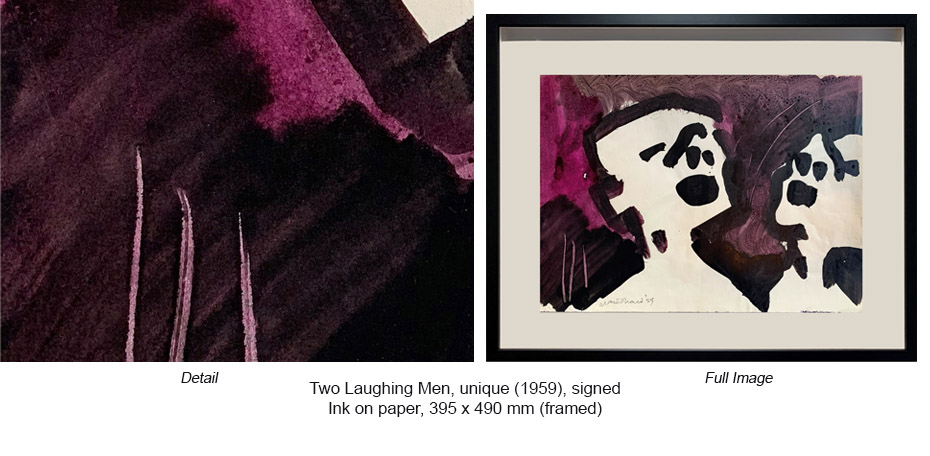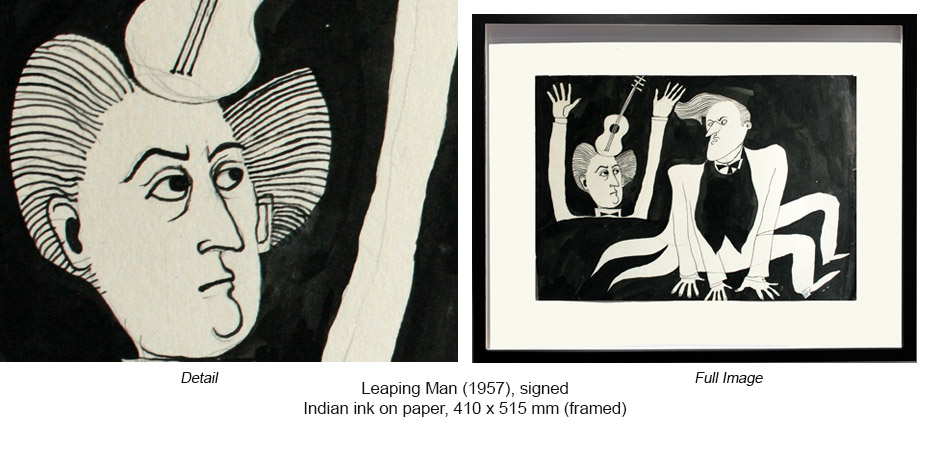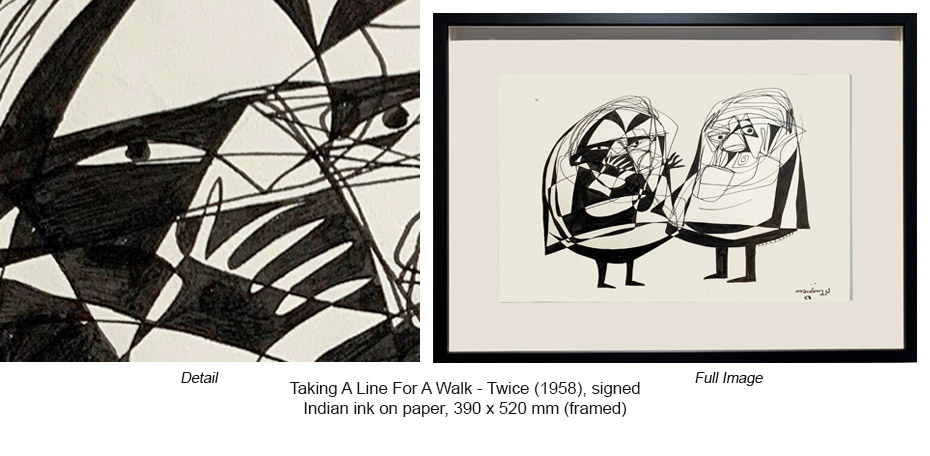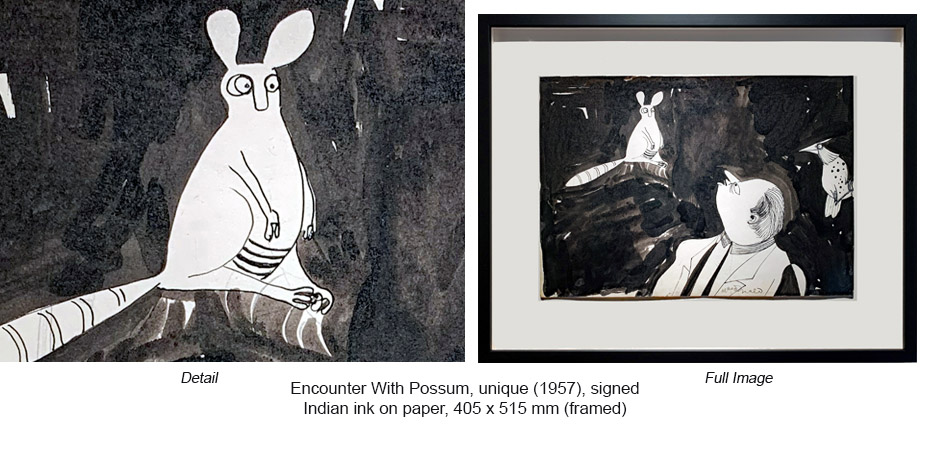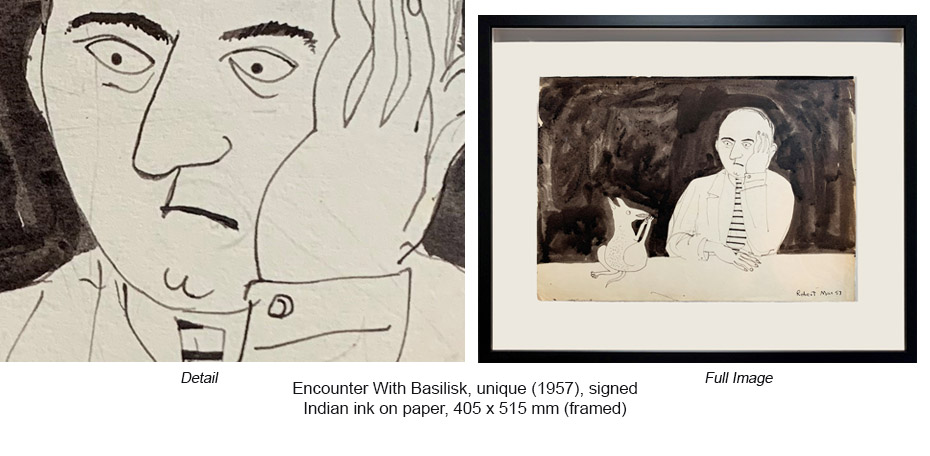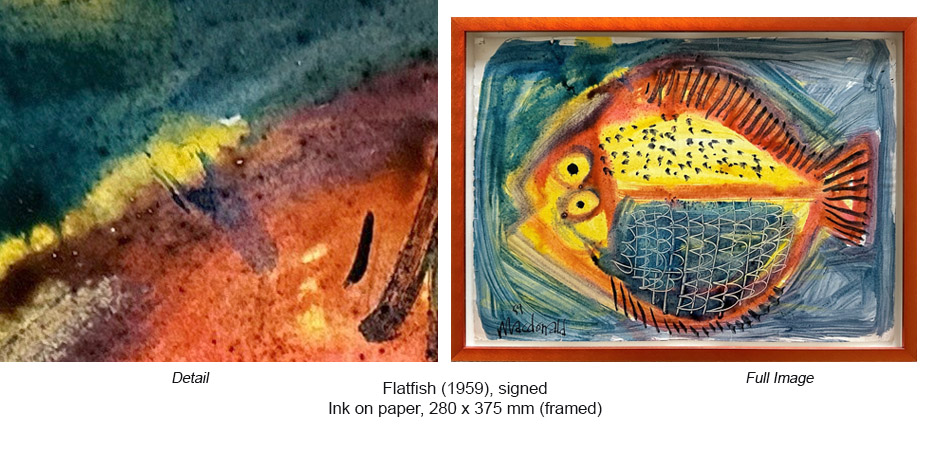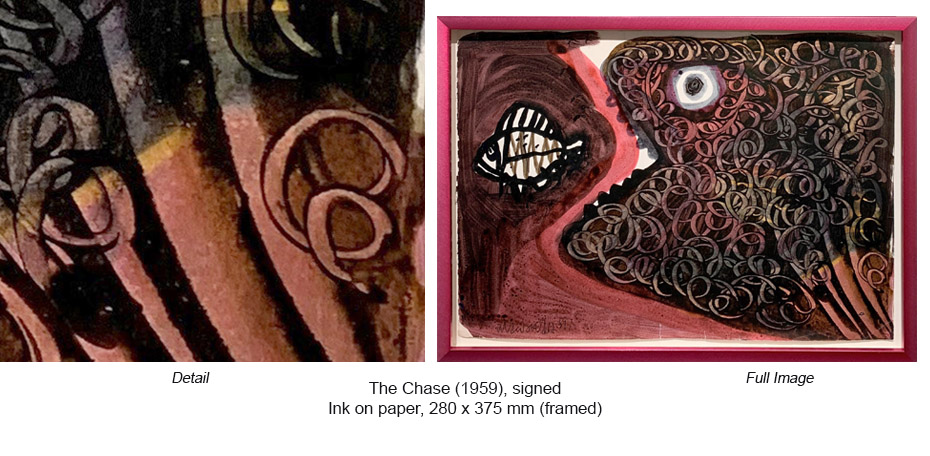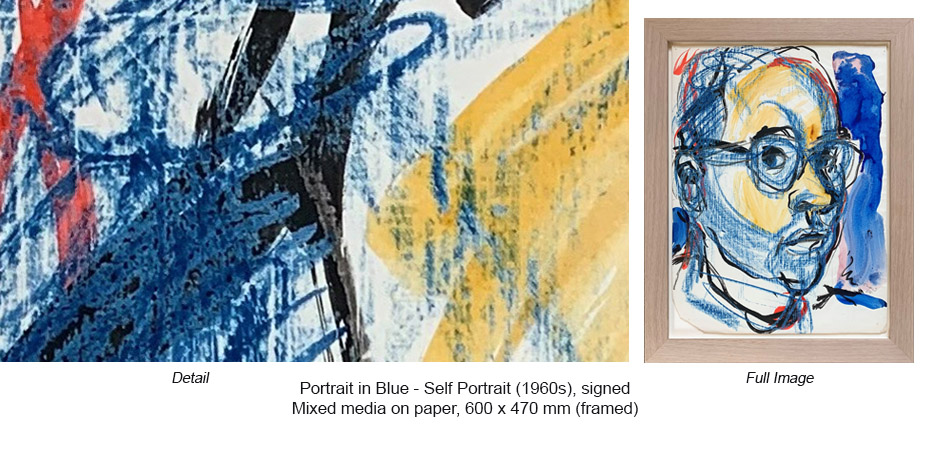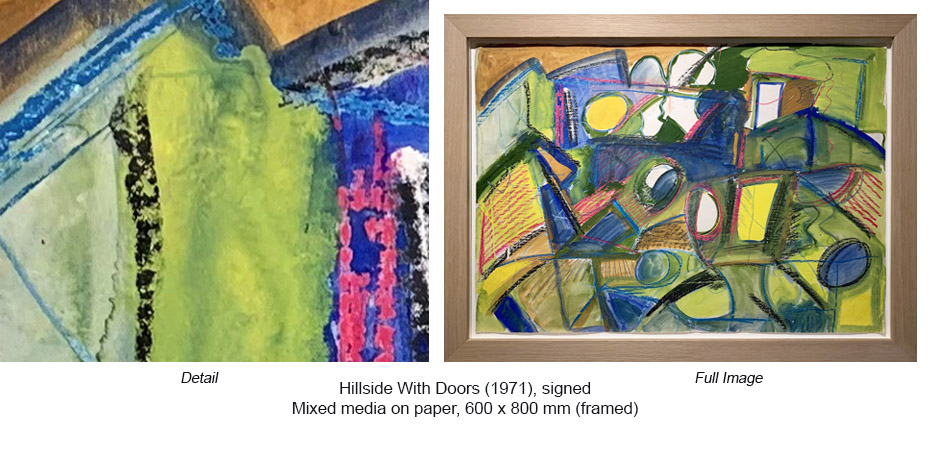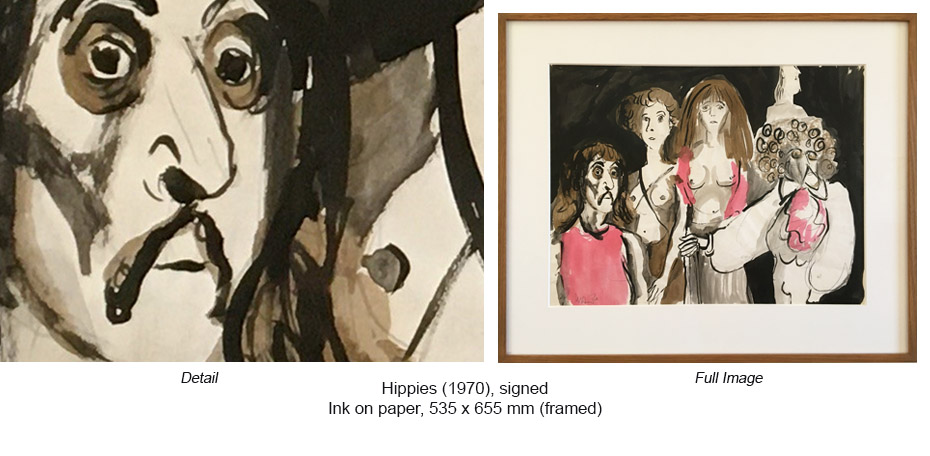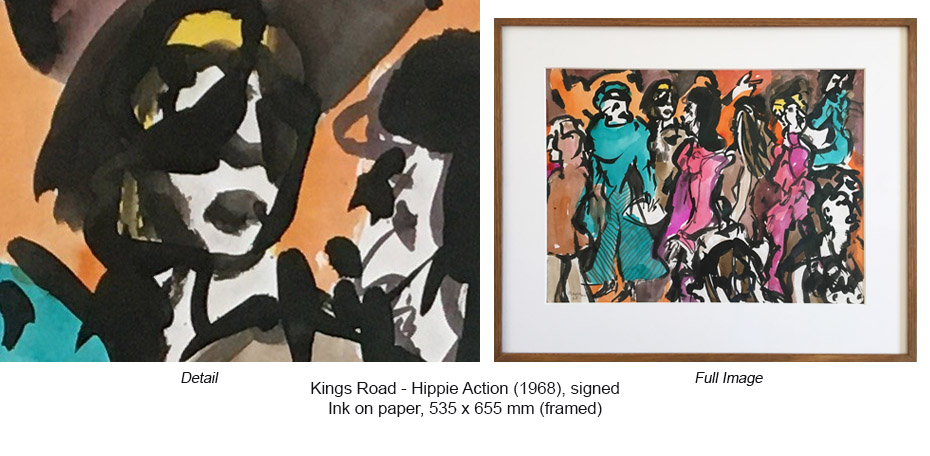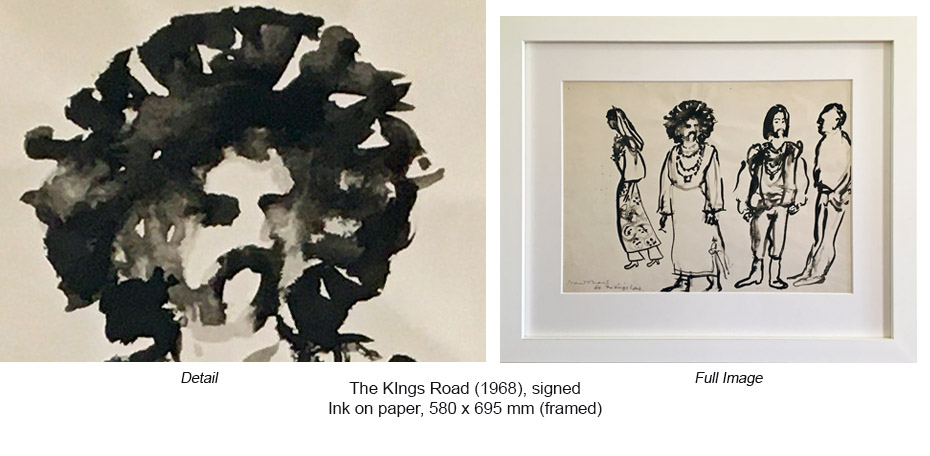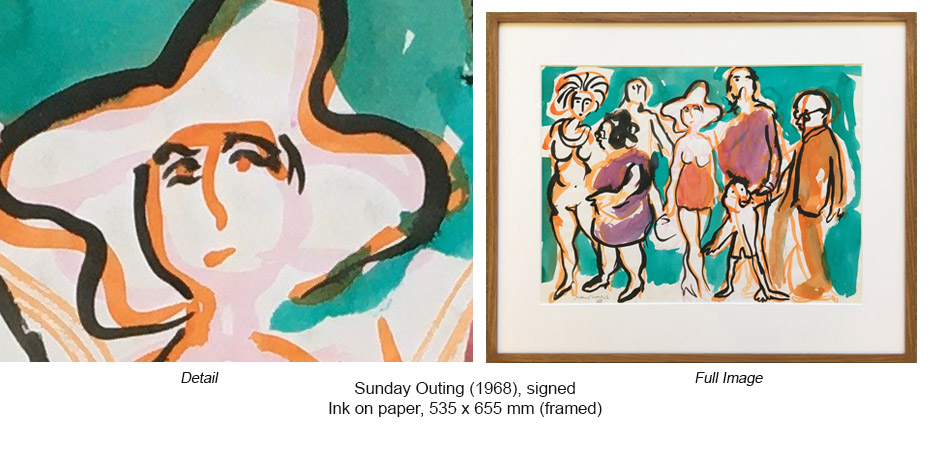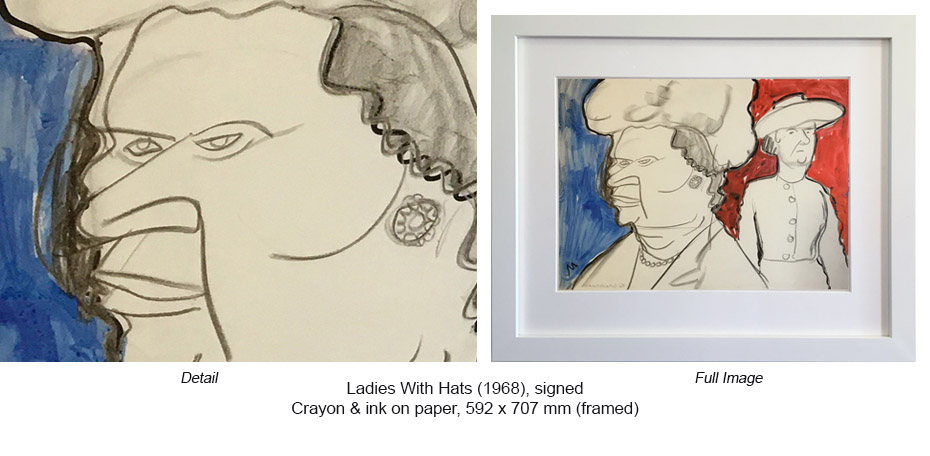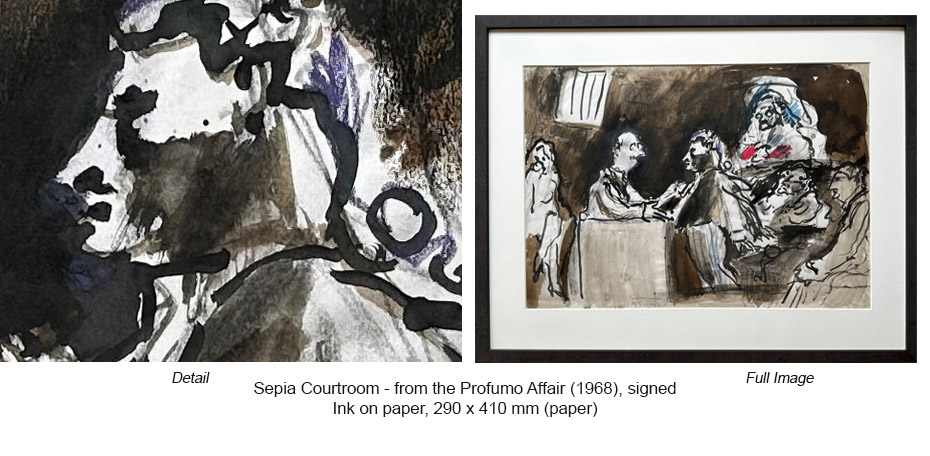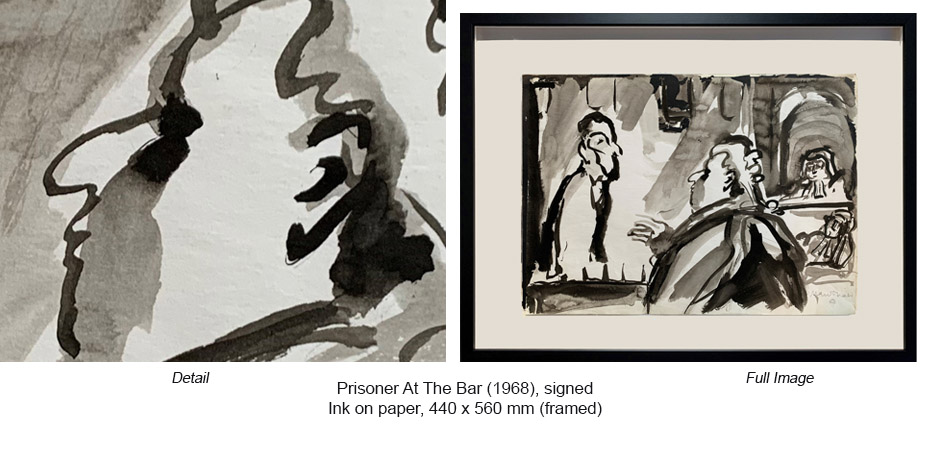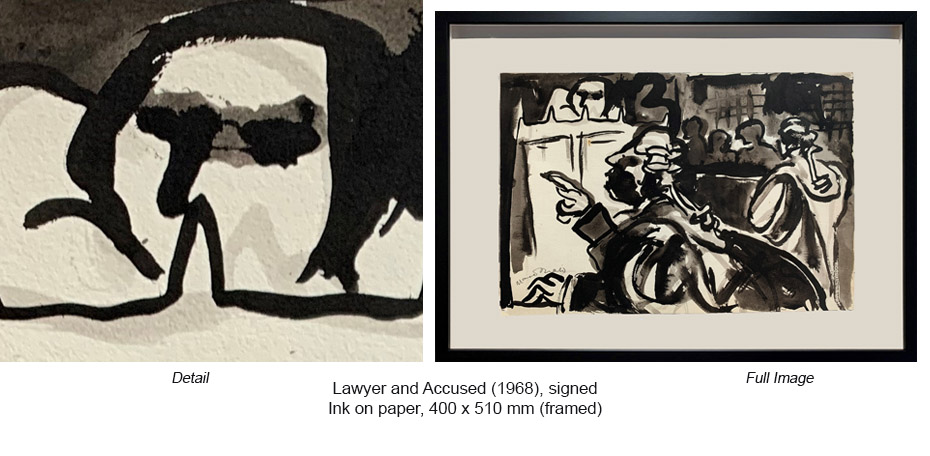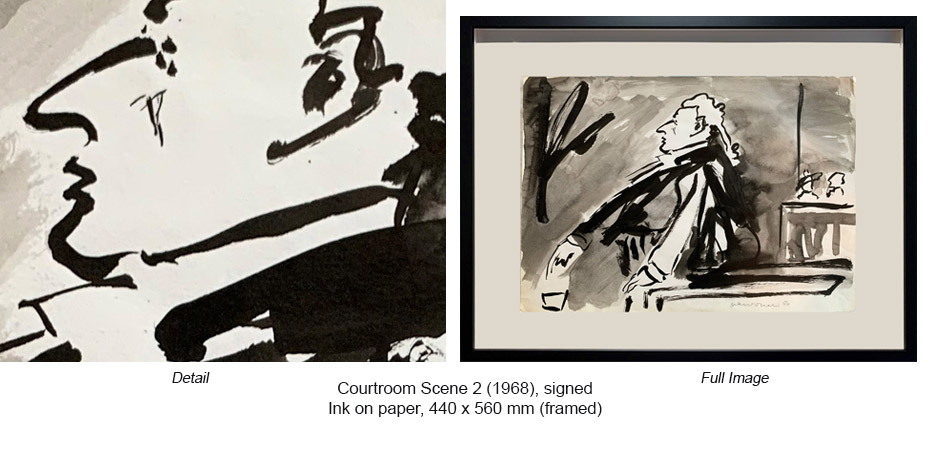Born in 1935 in Lincolnshire, the bombing of Macdonald’s home during the war led to his family emigrating to New Zealand in 1945, settling in Ruawai, a mixed community of Maori and Pakeha. With art studies out of reach, Macdonald trained as a reporter before undertaking a period of service with the NZ army. He worked as a journalist at the New Zealand Herald until 1958 when he was let go after refusing to shave off a beard grown during a sailing holiday.
Still wanting to paint, and eager to see more of the world, he signed on as unpaid crew on a sailing ship and headed to Sydney where he boarded an immigrant ship to Naples, finally finding his way to London. Enrolling at the Central School of Art, he met NZ art student John Drawbridge, and then Don Peebles (lifelong friends, now dead). Much impressed by Jackson Pollock’s first British show, Macdonald flung some sugar-lift liquid and finished an etching that was promptly included in an international exhibition of Twenty-five British Printmakers, among them Henry Moore, Barbara Hepworth and Graham Sutherland.
After exhausting his savings, Macdonald returned to reporting, this time at the The Scotsman, London covering world affairs, which took him to parts of what was then colonial Africa. On his first day, he was sent to cover a notorious Old Bailey trial in ‘60s London. He worked in Fleet Street throughout much of the ‘60s, painting in his spare time. His works were often satirical – the journalist observing the world around him with cynical eyes. He returned to the Central in the early ‘70s, where he turned Gottfried Lindauer’s portraits of Maori chiefs into large, semi-abstract designs to be displayed in New Zealand House in 1972. In 1974 — money again — he returned to journalism as chief diplomatic correspondent for the Central Office of Information. It was with foreign office ministers that he flew to Idi Amin’s notorious regime in Uganda to rescue a British lecturer in danger of execution. While still formally reporting for the Foreign Office, he (under a pseudonym) entertained a second and much more appreciative readership with fresh light on the contortions of diplomacy.
He visited China, Arabia and the UN in New York before, in 1976, taking a place as a mature student at the Royal College of Art. Now a successful artist, president of the Royal Watercolour Society of Wales, a director of the Swansea Printmaking Workshop, author of the book The Fifth Wind (’89), his prints have been widely exhibited internationally and are held in private collections including the Victoria and Albert Museum, London.


